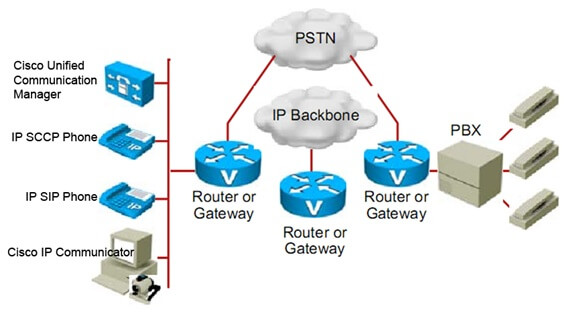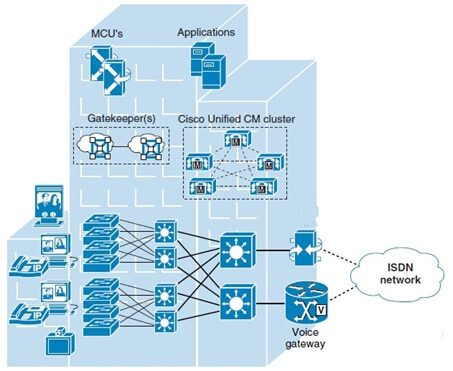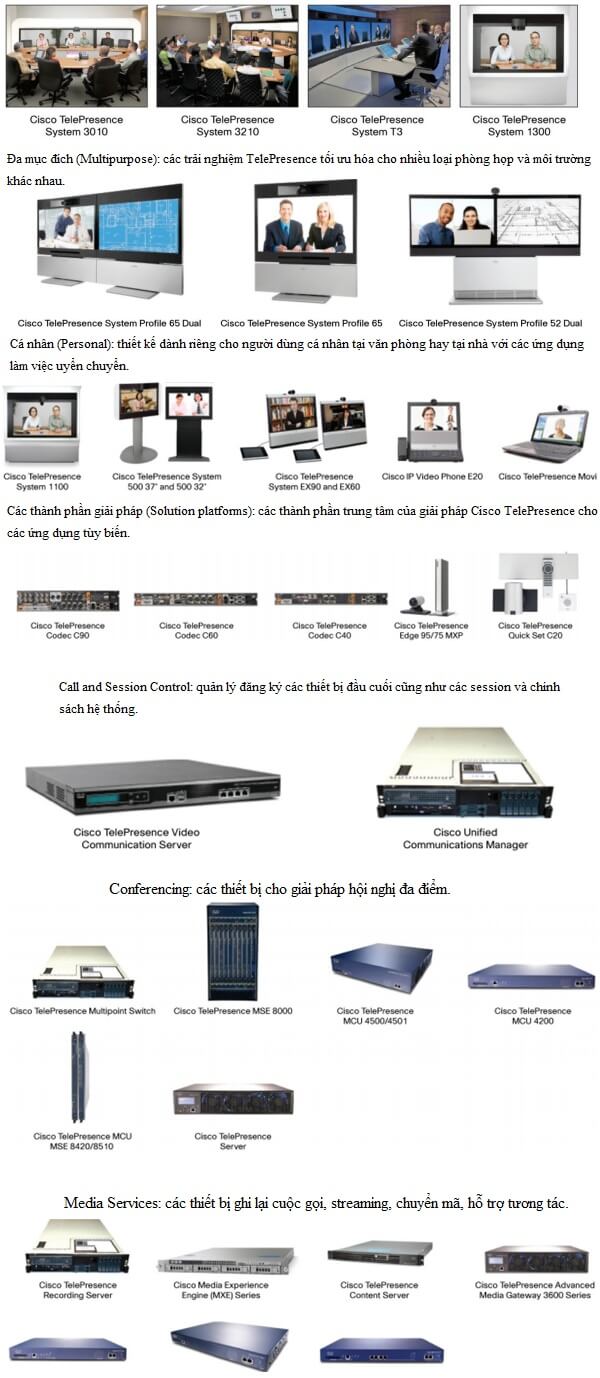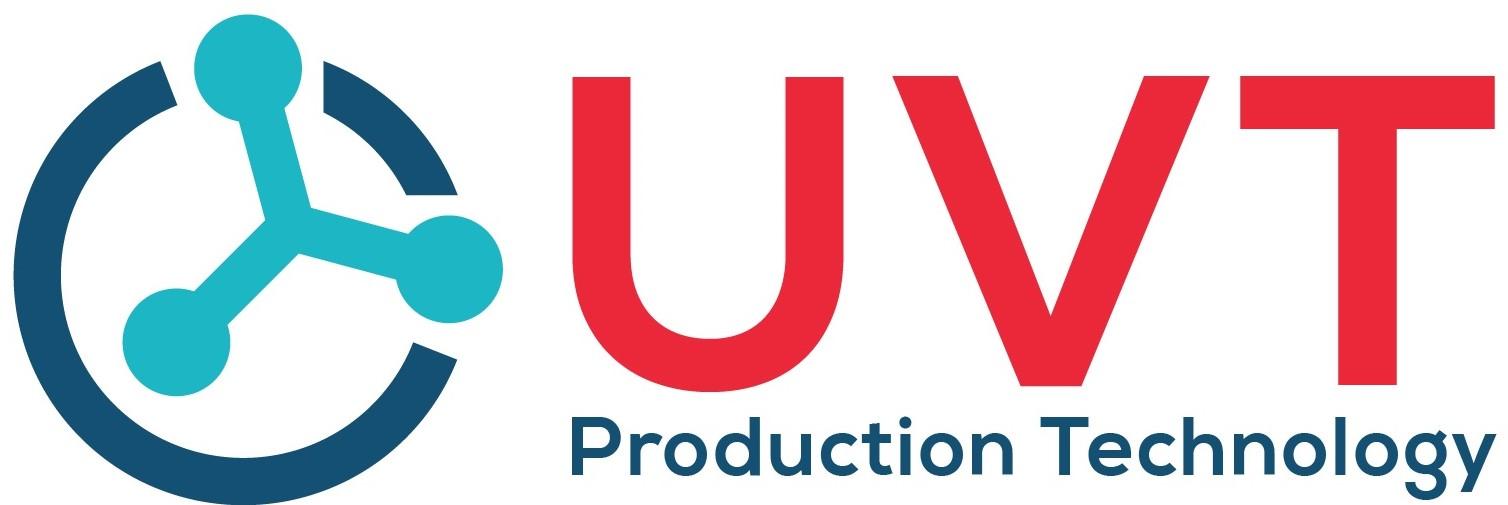Collaboration Solutions Set
10:48 - 27/11/2014
Storage and server technology
Safety system - Lightning protection
ANALOG CAMERA SOLUTIONS
VIDEO CONFERENCE SOLUTION FOR 2 DEMAND POINTS WITH CISCO SX20 DEVICE
Unified Communications combines all forms of business communication into one unified system for powerful new forms of collaboration. Today's unified anytime, anywhere communication systems that combine voice, video, data, mobility, messaging, conference and call center applications - integrated with phone systems current and an IP voice system to provide maximum flexibility to free employees from their desks, enable employees to communicate effectively wherever they are working, and improve acumen and benefit profit.

Cisco Unified CallManager is the call handling component in Cisco unified communications system. Cisco Unified CallManager extends enterprise voice capabilities and capabilities that translate into call-packed devices such as IP Phones, multimedia processing equipment, VoIP gateways, and multimedia applications. Further services such as messaging consolidation, multimedia conversation, contact center, and multimedia interactive feedback with IP telephony solutions through Cisco Unified CallManager application programming interfaces (APIs). .
2. Advantages and benefits of the solution
IP Telephony is one of the solutions to meet the telephone needs on IP networks while maintaining the ability to communicate with other traditional networks such as PSTN, ISDN.
Therefore, equipping IP Telephony system is an effective preparation to respond to the development of technology in the future. IP Telephony system will bring the following benefits:
- High availability: the ability to backup when part or all of the equipment fails, or when the system is shut down for routine maintenance.
- Save on long distance connection costs: companies or organizations that apply IP Telephony can reduce intercity or international phone charges for calls over PSTN.
- Information ensures smooth: connected devices can detect problems in the transmission line and switch to other transmission lines, ensuring that the communication between the two ends is always maintained smoothly.
The outstanding advantages of IP Telephony system compared to traditional PBX system:
- Softphone: is software running on a PC providing the functions of a phone. This service helps users to set up calls, answer the phone while still working on the computer.
- Meet-me Conference: is a regular and periodic conference service. The members automatically access the "conference room" at the agreed time without having someone in charge of connecting.
- Web access: via IP phone to get XML information on that Web page. This Website may be a Web site containing internal information of a company such as price updates, policies ...
- Mobile user: this is an extremely effective feature for employees wishing to travel regularly. From the company's branches around the world, through the WAN, the employee can subscribe to the company's IP Telephony network to use the phone service as if they were at their regular workplace me.
- Expansion services: IP Contact center: IVR, ICD, CTI ... customer support systems, automatic answering allow today's businesses to better support customers in a competitive environment.
3. The basic components of the voice system based on IP
3.1 Central switchboard components
Call handling center Cisco Unified Communication Manager (formerly known as Cisco CallManager or also known as IP PBX) is the center that handles all voice calls for IP Telephony network. Cisco Unified Communication Manager enhances the capabilities of IP voice networking through network devices such as IP phones, media processing devices, VoIP gateway equipment, and multimedia applications.
Furthermore, Cisco Unified Communication Manager allows the distribution of all IP phones, gateways and applications over an IP network forming a Telephony IP network with all designs ranging from single, distributed or virtualized. (virtual). The number of users that Cisco Unified Communication Manager manages depends on the hardware as well as the software structure with the maximum number of tens of thousands of phones and Voice devices.

Mô hình UC của Cisco
3.2 Voice Gateway System
Voice gateway provides communication between different types of Voice control signaling protocols. For example, Voice Gateway provides communication between Voice systems using H.323 protocol and PBX systems using other protocols through a protocol conversion system. Provides connectivity of IP Telephony system to PSTN systems, traditional PBXs or connects to analog phones or fax machines.
Cisco Voice Gateway products are usually divided into two types:
- Analog Gateway: Here are two common types of Analog Gateway devices:
- Analog station gateway devices provide connection between the IP Telephony network and a traditional post office phone system (POTS).
- Analog Gateway devices connect to trunk lines, provide interfaces between IP Telephony systems and PSTN CO switches, or connect to other PBX systems.
- Digital gateways: The digital gateways are also devices that provide communication between IP Telephonyh network systems with PSTN networks or PBX systems through digital trunk lines.
3.3 Gatekeeper System
Gatekeeper is an H.323 device providing call control service to endpoints and transferring addresses between E.164 and phone list. Gatekeeper will manage the inbound and outbound bandwidth between centers and between zones. Gatekeeper will provide the following services:
- Address translation: transfer E.164 address and phone list
- Manage incoming and outgoing calls to each region and each member company
- Support unlimited number of sites.
The terminals (for voice service) will be configured to automatically search for the gatekeeper (gatekeeper discovery) through a sending multicast gatekeeper request (GRQ).
3.4 Endpoint System
Terminal communication devices include desk phones and voice software installed on the PCs and each of these devices has Ethernet connections. Details of the equipment are as follows:
- IP telephony allows direct IP calls.
- Software IP phones: these are voice applications installed on the user's PC and have all the features of the phone such as call tracking, dial-up….
- Video Terminal: including camera linked to a computer, fully compatible with Cisco Unified Communication Manager. When the user's PC is physically connected to the Cisco IP phone, the user can make video calls.
- Wireless IP phone: allows wireless voice link with other devices via wireless network according to 802.11 standards.
- Mobile phones: in addition to support for receiving and making calls from normal GSM networks through Simcard, these phones also support Dual-mode (with wifi support), then through wifi In the building, these phones subscribe to Cisco Unified Communication Manager and become desktop phones and every employee can go anywhere in the wifi zone without having to miss a call when someone calls. to your desk number.
4. VoIP deployment models
There are currently many models for implementing Unified Communication Unified Communication, but any unified communication system must be based on a call center device, Cisco Unified Communications Manager. This is the central processing system for the entire Unified Communcation system of Cisco.
Here are some models of implementing IP Telephony systems based on the platform:

Single Site Model
A single site Cisco Unified Communication system deployment model consists of a call center that is uniquely located on a site. IP Telephony services will not be available over the WAN environment. For this deployment model, all equipment serving the IP Telephony system including PBX system, voice gateway system, Endpoint system is located at a central site, voice data will be concentrated. at a single point.
Single Site deployment model will provide high availability, the ability to utilize the available network infrastructure. When using the Single Site model, the system can completely use the G.711 Codec standard for voice services, because the voice data does not have to go through the WAN environment, where there are many limitations on the tape problem. information.
However, when deploying the IP Telephony system under the Single Site model, VoIP services are concentrated at one point without the distribution of branches or other transaction offices.
Multi-Site model with centralized call center
Multi-Site deployment model is designed according to the principle of having a call center located at the headquarters, providing VoIP services to remote sites connected to via IP WAN infrastructure. The WAN network is responsible for the transport of VoIP traffic between the central site and the remote sites. Remote sites will rely on Cisco Unified Communication Manager system deployed as Cluster to use services such as Voice Mail, IVR (interactive voice response). These applications are usually located on a central site together with Cisco Unified Communication Manager to reduce administration and maintenance effort.
Distributed call processing multi-point communication model
This model is only applicable when a Cisco Unified Communication Manager Cluster is not large and powerful enough to support the entire system either due to geographic or organizational conditions. This model consists of the Cisco Unified Communication Manager cluster connected to each other through the H.323 trunk. Each Cisco Unified Communication Manager Cluster will then include Cisco Unified Communication Manager, gateway, gatekeeper, MCU, endpoint, and applications. In addition, QoS service quality management must be applied to WAN connections between sites.
Digital Media Suite - DMS solution
Introduction of DMS technology
Digital Media Suite - DMS is a multimedia communication solution developed by Cisco, DMS that transforms the way learning, communication and collaboration for corporations, banks, hospitals, and schools.
DMS product suite
The DMS product suite includes three main features for the application of customers' multimedia transmission solutions: Digital Sign, Cast and Show and Share.

- Digital Sign: plays the role of electronic board, responsible for displaying images, videos, flash, .. on the LCD screen. Immediately called Digital Sign aims to recommend customers to replace traditional LED display panels by displaying richer and more vivid content on LCD screens managed by DMS systems.
- Cast: is seen as the organization's internal TV IP system, with Cast customers customized to provide a video on demand system (VoDs) or online (live video) for promotional purposes, informs and entertains staff, customers, and students.
- Show and Share: the application to share videos on the local network and also publish them outside the internet. Show and Share provides customers, staff and students access to video or watch live webcasts on their personal computers. Users can also upload videos, watch videos and record videos directly from the personal computer anywhere anytime.
Equipment components
The DMS system consists of basic components such as:
- Digital Media Manager (DMM) is in charge of managing the terminals
- Digital Media Player (DMP) is a terminal that connects directly to the LCD to display content.
- In addition, the system can also equip other auxiliary equipment depending on the needs of customers such as Encoder, Media Experience Engine.
Customer benefits
- DMS uses the network as a platform for providing multimedia services, DMS serves a variety of industries, and is seen as an innovative tool for marketing, sales, education and training.
- Accelerate growth by advertising product promotion and advertising opportunities.
- Safe and fast video communication anytime, anywhere on a large scale
- Promote learning and training for employees, customers, partners and students dispersed across multiple geographic areas simultaneously.
- Save time and money by streaming video instead of spending hours in one-on-one meetings.
- Secure communications allow authors to control who has access to view their content.
Why choose Cisco
Through its unique ability to integrate multiple media devices and media formats, Cisco can help companies improve digital communication quality, performance, and efficiency in ways that competitive solutions do not. can be supported.
- Comprehensive solution: No competitor can match Cisco for a comprehensive solution that includes webcasting and video sharing, number plates and enterprise IPTV applications.
- Integration: This solution, unlike competitors' solutions, is tightly integrated into the network and uses the reliability and security of the network as the foundation. It integrates seamlessly with Cisco Medianet and other enterprise video systems such as TelePresence.
- Efficient content creation and delivery: Only Cisco can provide a system that integrates multiple technology components together, optimizing content creation, editing content for content. Attractive and effective richness.
- Reliability: The Cisco DMS solution uses a highly reliable semiconductor digital head to avoid high failure rates of the personal computer.
Scalability: The Cisco DMS solution provides a number plate platform that can be scaled up to 1000 endpoints.
Cisco TelePresence video conferencing solution
Overview
Cisco TelePresence is a standard solution for conferencing that delivers three-dimensional, in-person experiences that connect teams and individuals in different ways, extending face-to-face collaboration within the enterprise, partners and suppliers. No longer confined to the traditional purpose of saving travel costs when holding meetings, Cisco TelePresence aims to build a collaborative work environment with diverse interoperability, changing the way and business operation model with completely new experiences.
With the evolution of traditional video conferencing from standard definition (SD) to high quality (HD), the diversified endpoint portfolio system and complete Cisco TelePresence infrastructure components are suitable for all different types of customers and business models whether customers choose a new investment solution or expand an existing system. User-friendly, efficient TCO, high investment efficiency are the advantages of Cisco TelePresence solutions.
Cisco TelePresence product range
Cisco TelePresence has a portfolio of products including: endpoints, infrastructure components, and intercompany capabilities.
The terminals are optimized for different environments:
- Three-dimensional (Immersive): TelePresence rooms are optimally designed and tailored to create virtual communication like face-to-face. Including all components such as lighting, camera, desk, microphones ...
- Multipurpose: TelePresence experiences optimized for a variety of meeting rooms and environments.
- Personal (Personal): specially designed for individual users at the office or at home with flexible work applications.

Management: Cisco TelePresence Manager, Cisco TelePresence Management Suite
Cisco TelePresence solution applications
Cisco TelePresence has a very wide range of applications allowing you to do more with less, change your organization, and be more environmentally friendly. Cisco TelePresence enables you to unify your organization and change the way you communicate and exchange information with the availability of critical resources anywhere. Many business applications and processes are being changed using Cisco TelePresence as a strategic tool, for example:
- The financial applications include virtual transaction windows and remote bank branch office professionals.
- Personal consultation with remote specialist for retail stores.
- Intuitive customer support service (face to face).
- Supports remote interviews and human resources.
Benefits of implementing Cisco TelePresence
With a comprehensive product portfolio and an integrated architecture, Cisco TelePresence offers full compatibility based on standards and features user-friendliness. With Cisco TelePresence, you can:
- Connect face-to-face with customers, partners and colleagues, and build trust, understanding, and relationships. Video experiences are completely different from traditional voice.
- Arrange executives and experts in a way like never before, change your business model and make a competitive difference
- Increase productivity with more interactivity and less mobility.
- Speed up time to market and make faster decisions with the right resources at the right time.
- Unleash IT resources with ease of use and simple operation to focus on strategic projects instead of operational maintenance.


